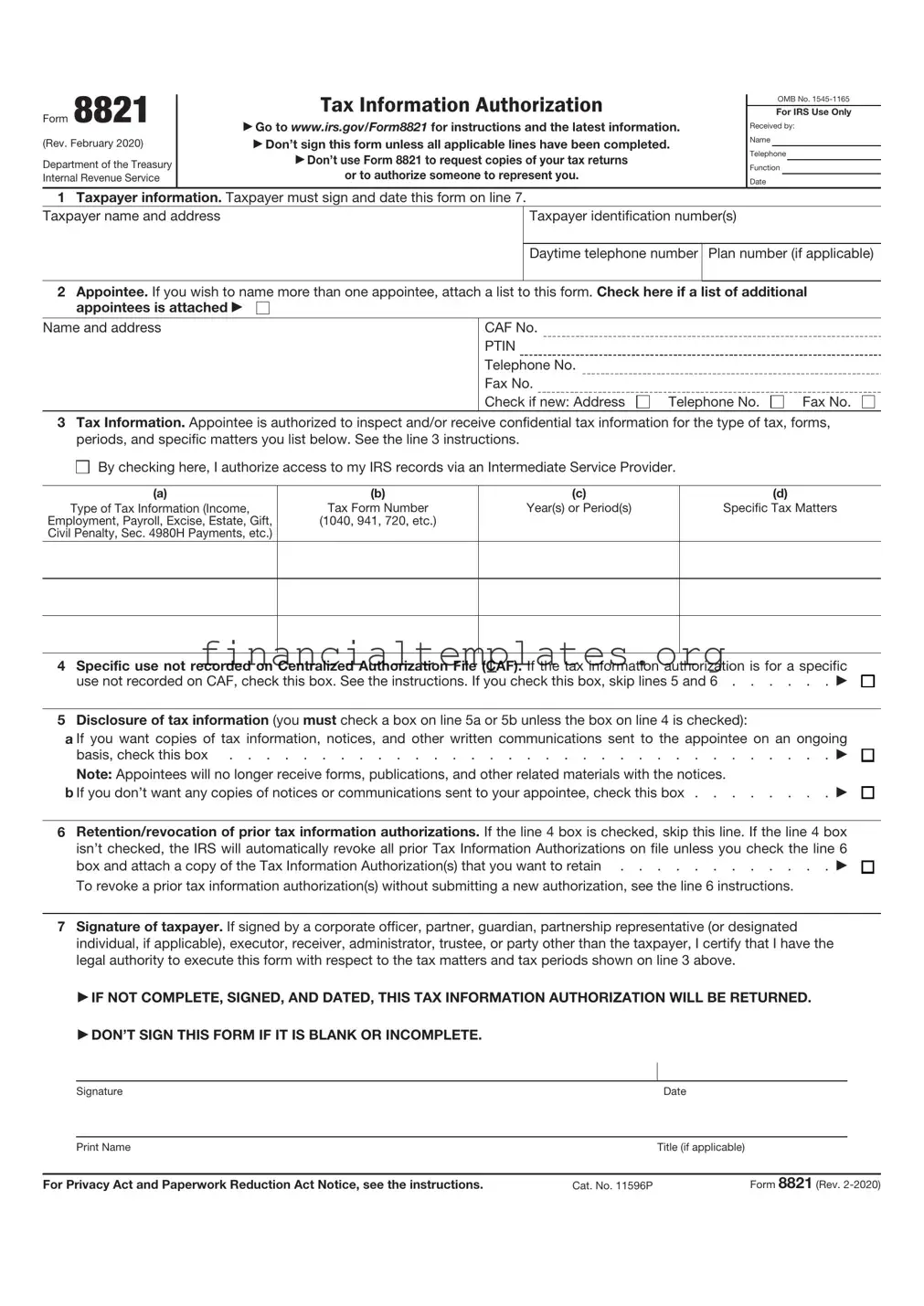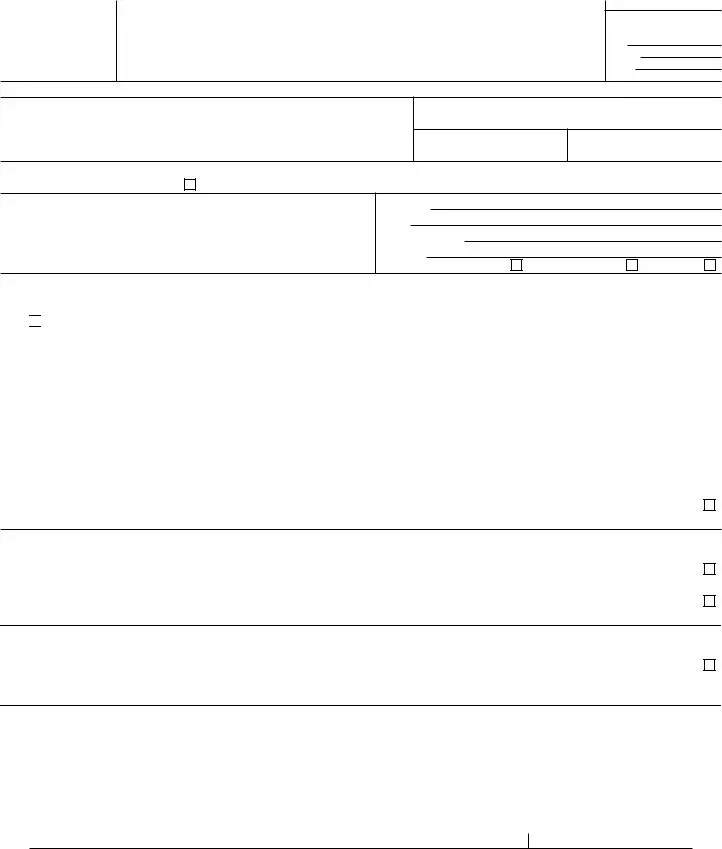The IRS 8821 form is quite similar to the IRS Form 2848, Power of Attorney and Declaration of Representative. Both serve the purpose of authorizing individuals to access private tax information, although they function differently in scope and application. The Form 2848 specifically grants an individual, typically a tax professional, the authority to represent a taxpayer before the IRS. It allows them to perform acts such as signing agreements or consents to disclose, whereas Form 8821 is limited to information sharing without the authority to represent.
Another document akin to the IRS 8821 is the IRS Form 4506, Request for Copy of Tax Return. This form allows taxpayers or third parties to request copies of tax returns from the IRS, similar to how the 8821 form permits access to tax information. However, the Form 4506 is used to obtain actual copies of filed tax returns, and the authority is given directly to the individual or entity making the request, not to someone else to act on behalf of the requester.
The IRS Form 4506-T, Request for Transcript of Tax Return, also shares similarities with the 8821 form in that it is used to request tax return information. The primary difference lies in the type of information obtained; the Form 4506-T is for transcripts, which summarize tax returns, while Form 8821 can allow access to a broader array of tax documents. Both forms are tools for accessing tax information, yet they serve different needs depending on the detail and type of information required.
Comparable to the IRS 8821 form is the Form 9465, Installment Agreement Request. While Form 8821 facilitates access to a taxpayer's records, Form 9465 is used to request a payment plan for paying off outstanding tax liabilities. Both forms are crucial for tax management and resolution strategies but serve distinctly different functions within that process. The 9465 directly impacts how a taxpayer can fulfill their tax obligations, whereas the 8821 impacts who can view the taxpayer's information to make informed decisions.
The Form W-9, Request for Taxpayer Identification Number and Certification, is another document related to the IRS 8821, albeit indirectly. Form W-9 is primarily used to provide information to entities that will pay you income, ensuring the correct reporting to the IRS. In contrast, the 8821 form would allow a designated individual to view such information as reported to the IRS. Both forms are essential for the accurate and lawful reporting and access of tax information.
Similarly, the IRS Form SS-4, Application for Employer Identification Number (EIN), bears a relation to the 8821 form. The Form SS-4 is used by entities to apply for an EIN, necessary for tax administration purposes. While Form SS-4 is about the creation of a tax identity, Form 8821 concerns the access to information related to that identity. Both play significant roles in the lifecycle of tax-related administration and compliance.
The Form 1099-MISC, Miscellaneous Income, and the IRS 8821 form also share a connection through the lens of tax information disclosure. The Form 1099-MISC is used to report various types of income to the IRS, which may then be accessed through the authorization granted by Form 8821. These documents combined ensure that income is properly reported and that authorized individuals can access this information as needed for further tax processing or advice.
Another document in this context is the IRS Form 706, United States Estate (and Generation-Skipping Transfer) Tax Return. This form is utilized to report the estate tax due to the federal government. While the 8821 form does not directly relate to estate taxes, an authorized individual can access such tax forms and related information of a decedent, enabling them to manage tax affairs more effectively posthumously. This highlights the versatile use of Form 8821 in various tax matters, including estate planning and compliance.
The Form 1040, U.S. Individual Income Tax Return, the cornerstone of personal tax filing, connects with Form 8821 through the comprehensive access it allows to one's tax filings. While individuals use Form 1040 to file their annual income taxes, the 8821 can grant designated persons access to these filings, among other tax documents. This access can be crucial for tax planning, resolution of tax issues, and understanding one’s financial standings with the IRS.
Lastly, the Application for Automatic Extension of Time To File U.S. Individual Income Tax Return, known as Form 4868, has an indirect relationship with the IRS 8821 form. While Form 4868 is used to request more time to file the Form 1040, the IRS 8821 could allow an authorized individual to access records pertaining to such an extension. This is indicative of how the authorization granted by Form 8821 can cover a wide array of tax-related documents and actions taken by or for the taxpayer.



 By checking here, I authorize access to my IRS records via an Intermediate Service Provider.
By checking here, I authorize access to my IRS records via an Intermediate Service Provider.